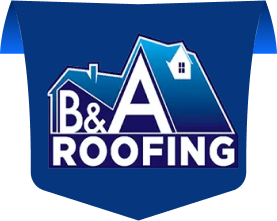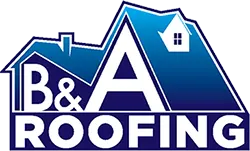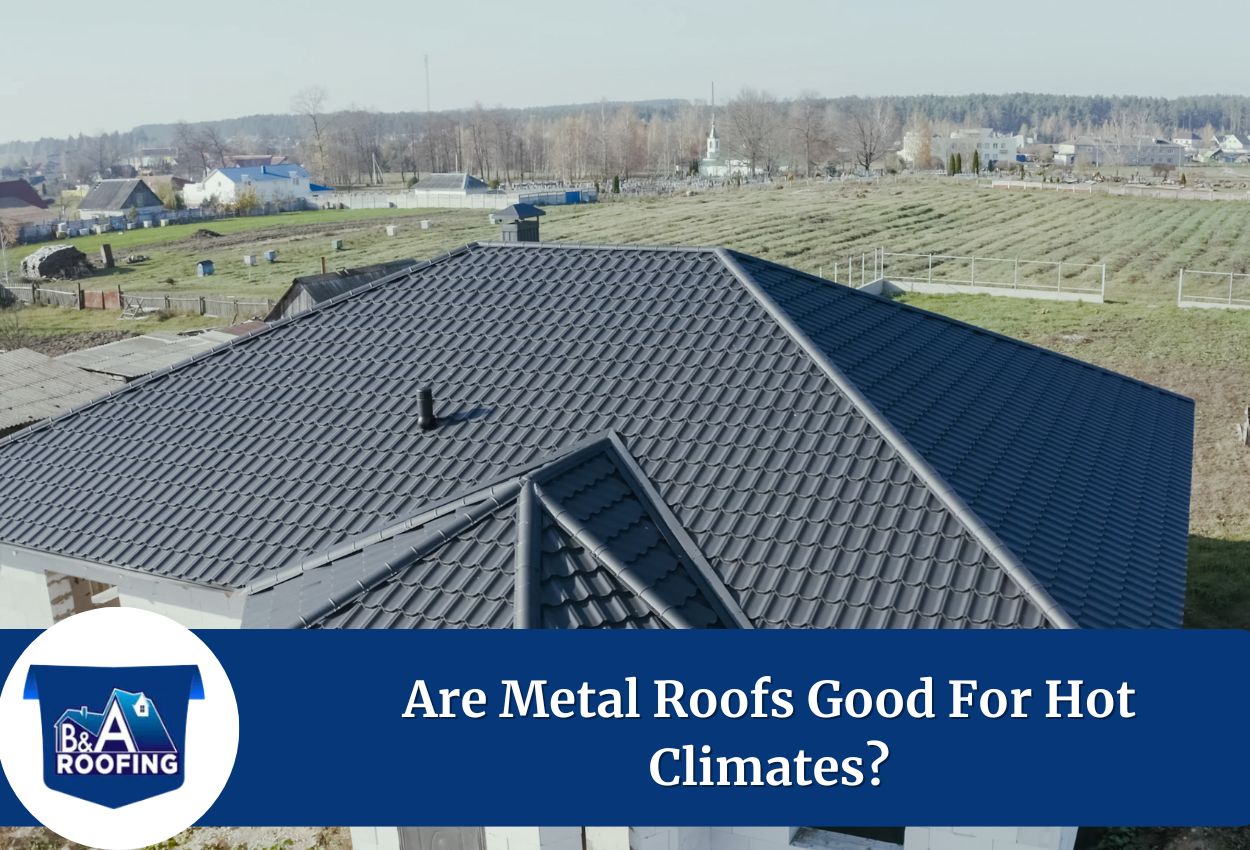If you live in an area of the country that deals with moderate to warm temperatures for the entire year, you’re likely aware of how your home’s comfort level and energy costs are greatly influenced by the roof.
During the summer, the roof of a home may absorb a lot of the sun’s heat, depending on the material it’s made of. That’s why more and more homeowners are turning to metal roofs as a better, long-term option.
But is a metal roof good for hot climates? In this blog post, we’ll explain how metal roofing systems work and help you figure out if it’s the right choice for your home.

Answering The Main Question: Are Metal Roofs Good For Hot Climates?
In hotter areas of the country, metal roofs are a wise investment since they reflect a large portion of the sun’s heat, keeping homes cooler and reducing air conditioning expenses by up to 50% when compared to asphalt shingles. They also have the ability to withstand extreme heat without breaking or curling, and require little care over a 40 to 70 year lifespan.
While metal roofs are more expensive than options like asphalt shingles, they’re a cost-effective way to stay cool.
What Are The Benefits Of Having A Metal Roof In A Hot Climate?
Let’s go over the key benefits that make metal roofs a smart choice for the heat:
1. Helps Save Energy
Metal roofs reflect sunlight instead of absorbing it, which helps keep your home cooler. This means your air conditioner doesn’t have to work as hard, potentially saving you around 20% to 50% on your energy bills.
2. Strong and Long-Lasting
Metal roofs are built to handle tough weather like strong heat, rain, and wind. They also have the potential to last over 50 years with little upkeep. In hot climates, where roofs take a beating, metal holds up well.
3. Keeps Heat Out
Many metal roofs have special coatings that enhance the roof’s ability to reflect heat. This keeps the roof cooler and stops extra heat from getting into your home. It makes a big difference in hot areas by helping your home stay cooler inside.
4. Better Airflow and Heat Protection
Metal roofs often come with built-in ventilation systems that let hot air escape from the attic. Some also have a gap between the metal and the roof deck, which acts as a heat barrier. Together, they help keep the interior temperature lower.
5. Environmentally Friendly
Most metal roofs are made with recycled materials and can be recycled again after many years. This means less waste and a more eco-friendly option for your home, which are important as we all try to care for our environment.
6. Low Maintenance
Once it’s installed, a metal roof doesn’t need much attention. It won’t rot, warp, or get damaged by pests as easily as some other roofing materials might, which means fewer repairs and less stress over time.
7. Different Options Available
Metal roofs come in a lot of styles and colors, so it’s easy to find one that fits your home’s look. You get both beauty and function in one roofing choice.
How Metal Roofs Keep Homes Cooler
To get a better idea of how metal roofs handle heat, let’s take a look at their cooling powers:
1. Doesn’t Hold Heat
Metal roofs have low thermal mass, which means they don’t hold onto heat for long. Unlike concrete or asphalt roofs that stay hot even after sunset, metal roofs cool down quickly once the temperature outside drops. This helps reduce the work your air conditioner has to do and saves you money on energy costs.
2. Reflects Sunlight
Many metal roofs today come with reflective coatings that bounce sunlight away. These coatings can keep roof surfaces much cooler — sometimes by as much as 100°F compared to regular roofing materials.
3. Good Ventilation
A well-ventilated metal roof lets hot air escape while bringing in cooler air. This consistent airflow helps prevent heat from building up in the attic and keeps your home more energy-efficient. It also helps stop moisture buildup, which protects the roof and makes your home more comfortable.
4. Releases Heat Quickly
Metal roofs have high thermal emittance, which means they quickly release any heat they absorb. This keeps your roof closer to the outside temperature and helps reduce indoor heat.
5. Cool Roof Certified
Many metal roofs are labeled as cool roofs because they meet standards from groups like Energy Star and the Cool Roof Rating Council. These roofs reflect more sunlight and take in less heat, lowering your cooling needs and even helping reduce the heat in crowded urban areas.
6. Works Well with Insulation
Metal roofs pair well with insulation like fiberglass or foil-backed materials. This setup blocks heat from passing through to your ceiling, which helps keep rooms cooler. This is especially useful in tropical areas.
Potential Drawbacks And Solutions
In order to provide you with a full picture of what you get yourself into with these roofing systems, let’s also look at some common concerns that people have with metal roofs and how to fix them:
1. Noise From Rain or Hail
Rain or hail can sound louder on a metal roof compared to other materials. However, adding insulation beneath the roof helps absorb sound, making your home much quieter during storms.
2. Higher Upfront Cost
The initial cost of a metal roof is usually higher than asphalt shingles. But thanks to its long lifespan and energy savings, it often ends up being a smart long-term investment.
3. Concerns About Appearance
Some people worry that metal roofs might look too industrial. Fortunately, modern styles come in a variety of colors and designs — even ones that mimic wood or tile — so you can still get the look you want.
4. Dents from Hail or Debris
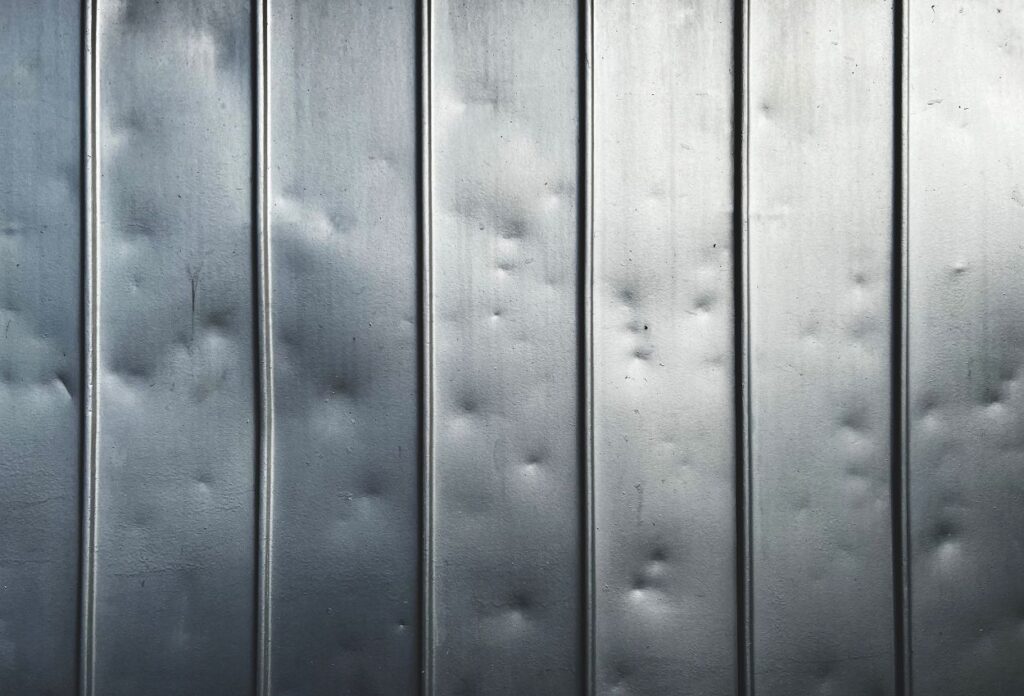
Thinner metal panels may dent from hail or falling branches. Choosing thicker panels or tougher metals like steel can help prevent this. Regular inspections and quick repairs also help keep the roof in good shape.
What Is The Best Metal To Use In Hot Climates?
Let’s delve into the best metal materials you can pick for a roofing system that needs to handle the heat:
1. Aluminum

Aluminum is light, rust-resistant, and reflects heat well. It’s a great fit for hot and coastal areas. It also tends to come with long warranties, making it a reliable and energy-saving choice for many homes.
2. Steel
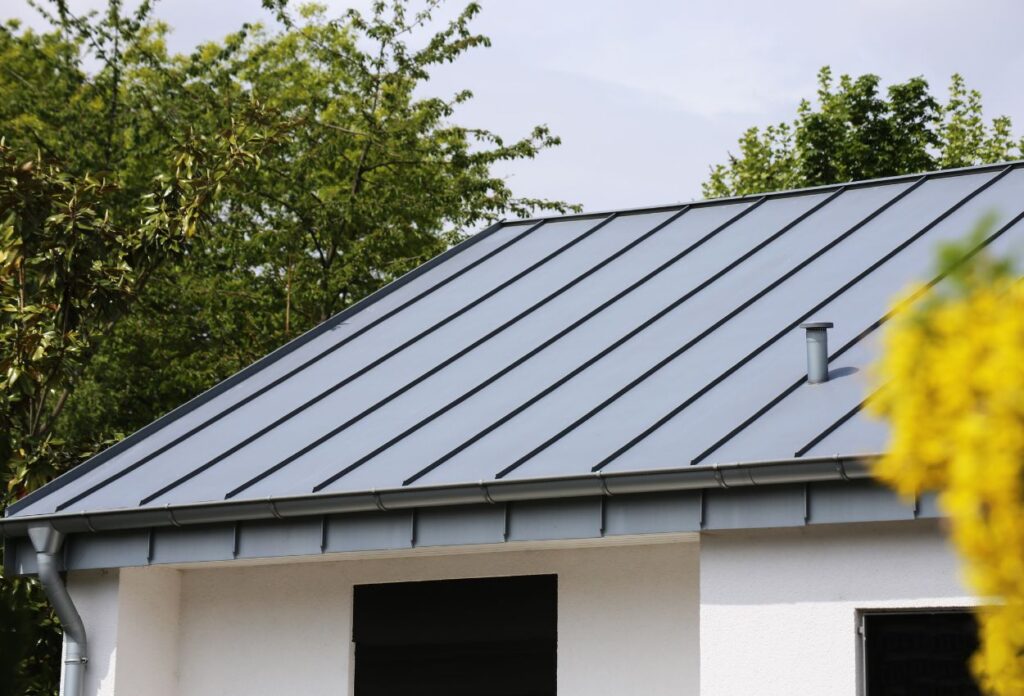
Steel is affordable and strong, and when coated with zinc, it resists rust and handles heat well. Adding reflective coatings makes it even more energy-efficient, making it a top choice for metal roofing systems in hot climates.
3. Galvalume
Galvalume is a mix of steel and aluminum. It’s durable, resists rust, and works great in both hot and coastal regions. It’s also cost-effective and doesn’t always need extra paint.
What Is The Best Metal Roof Color To Handle The Heat?
To help you decide on the right look and performance, let’s go over the best roof colors to choose from if you want to enhance the energy-efficient advantages of metal roofs.
1. White
White reflects the most sunlight, which helps reduce heat absorption. It’s one of the best choices for hot climates to keep homes cooler.
2. Light Gray
The next option, light gray, gives a nice balance between looks and performance. It reflects heat well and works with many home styles.
3. Beige and Pastel Colors
These soft shades not only look pleasant, they also reflect heat effectively. They’re great if you want both style and energy savings.
4. Light Blue
Light blue offers a bit of color while still reflecting sunlight. It’s a cooler-looking option that works well in hot areas.
Keep Your Home Cool With Metal Roofing Services From B & A Roofing and Gutters
Beat the heat with B & A Roofing and Gutters. Our expert team of roofers specializes in installing high-quality metal roofs that offer the best reflectivity, effective heat dissipation, and unmatched durability. We’ll work closely with you to choose the perfect metal roofing service for your home and day-to-day weather, ensuring high-quality roof performance and energy efficiency. Contact us today at (601) 520-3183 for an instant quote and see the difference.
